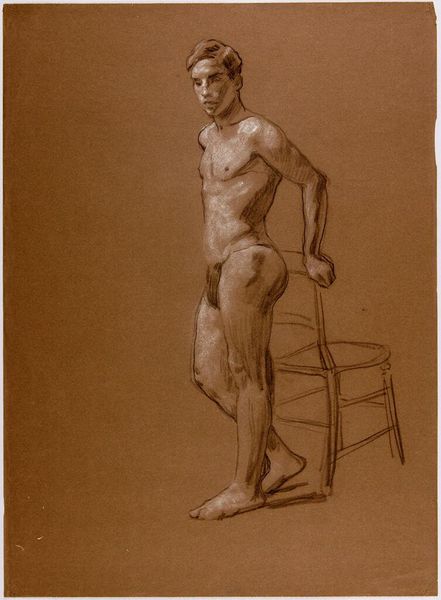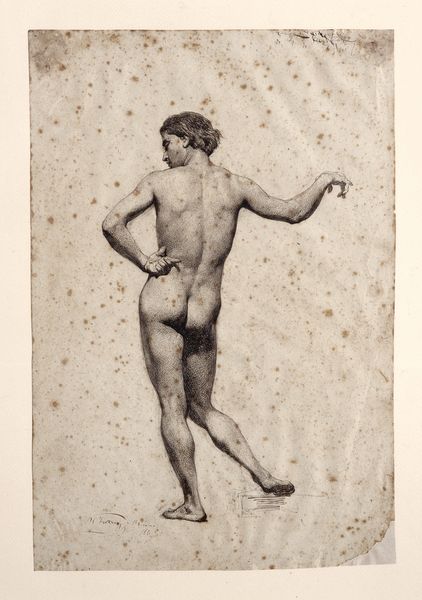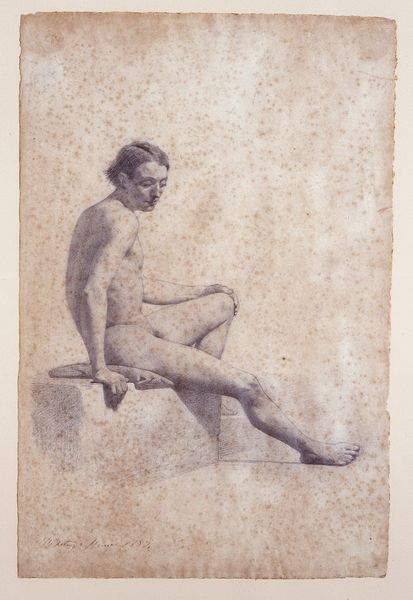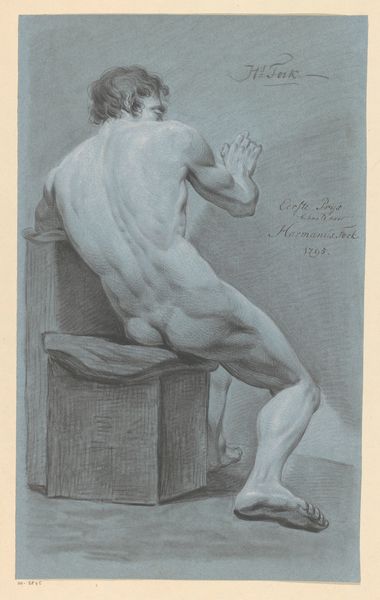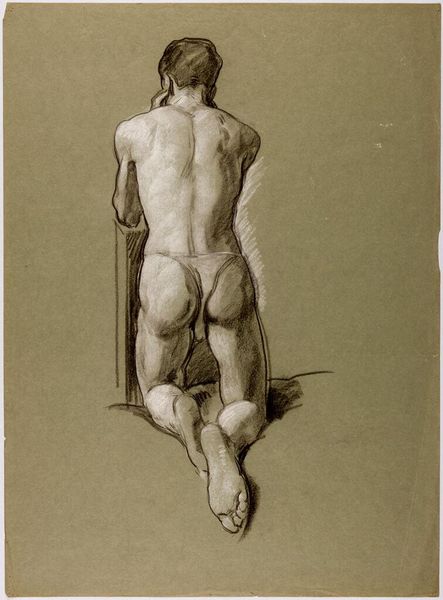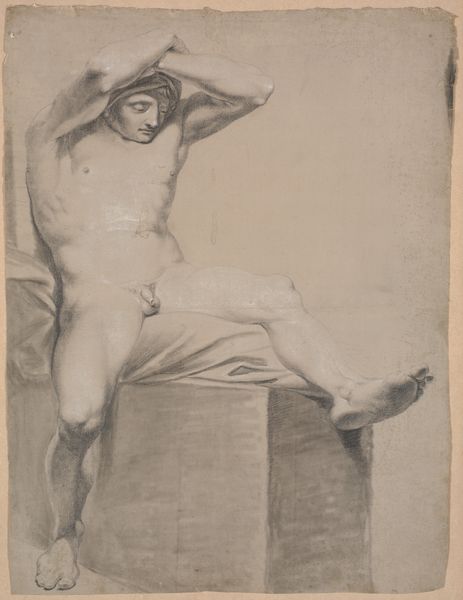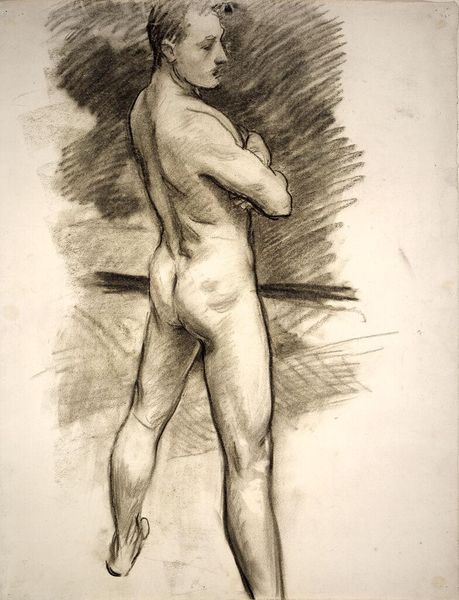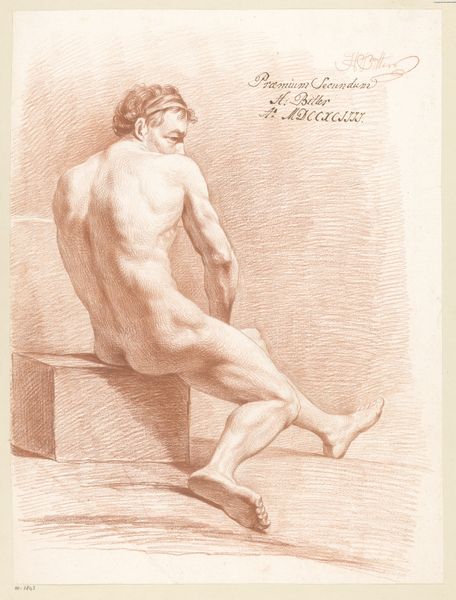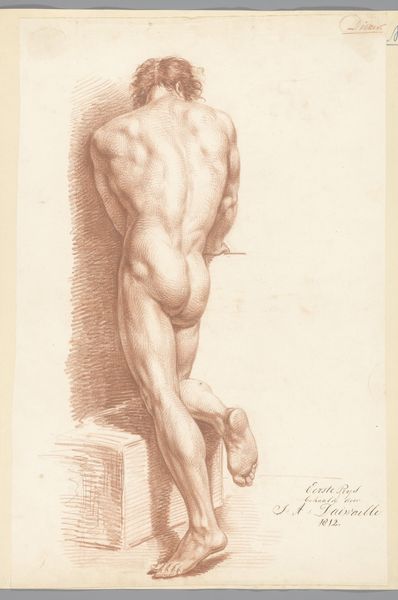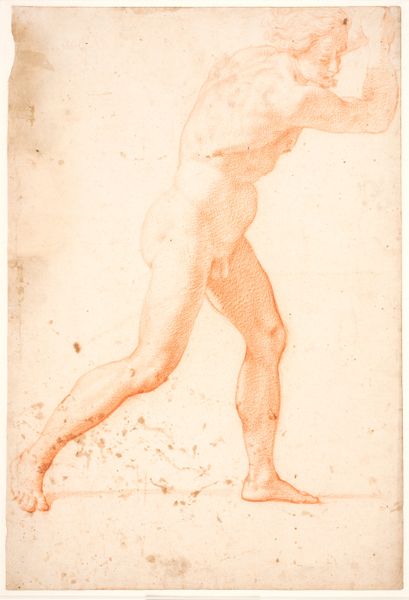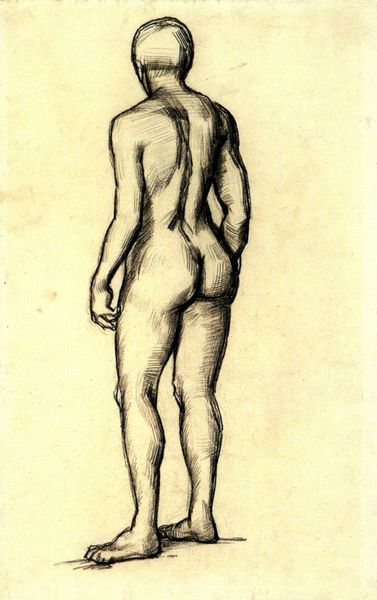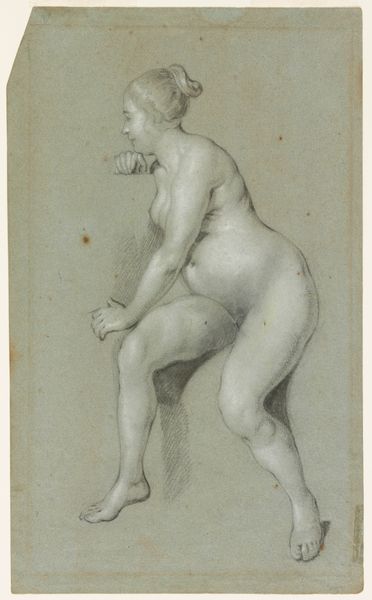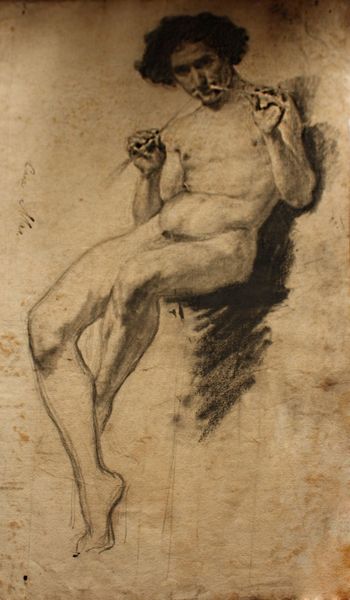
drawing, charcoal
#
portrait
#
drawing
#
self-portrait
#
charcoal drawing
#
figuration
#
pencil drawing
#
sketch
#
portrait drawing
#
charcoal
#
academic-art
#
nude
#
male-nude
Copyright: Public domain
Curator: Looking at this charcoal drawing, I am struck by its contemplative, almost melancholic, mood. The figure is hunched, turned away… it feels very intimate and withdrawn. Editor: This is "Seated Male Nude Seen from the Back," created by Vincent van Gogh in 1886. It's a fairly straightforward academic study, emphasizing the modeling of form through careful observation of light and shadow. Curator: "Straightforward" is one way to put it, but Van Gogh’s application of charcoal gives the body a weighty physicality, wouldn't you agree? You can almost feel the texture of the paper and the grain of the charcoal itself; labor made visible. Editor: Absolutely. The visible process reveals his deep engagement with artistic traditions, especially those rooted in rigorous observation and the materiality of the medium. Think of the social context: art academies prized this kind of figure drawing. Van Gogh's engagement with that system, and then his subsequent break from it, is critical to understanding his trajectory. Curator: Yes, his initial submission to and then rebellion against the academic structures are indeed quite telling. And here, he really foregrounds the labor, the 'making' of art. Is he simply depicting a model, or exploring the inherent artistic process of representation? It subtly challenges conventional boundaries between ‘high art’ and simple craftsmanship. Editor: His drawing encapsulates larger conversations around identity and the male gaze as well. The male nude, historically, has been loaded with notions of idealized masculinity. How does Van Gogh play with, or perhaps subvert, these expectations? Is he making a commentary on the often unseen male laborer's body? Curator: It also makes you wonder about the model himself. The man’s story is absent. Where does he fit within a late 19th-century Parisian social hierarchy? And how might this depiction affect the discourse of the time surrounding work, the male form, class… Editor: In a way, Van Gogh highlights the intersection of academic exercise, material presence, and potential social critique within one relatively modest drawing. Curator: Indeed. By calling attention to the 'making', he opens the space for viewers to consider the social, historical, and physical presence embedded within artistic practice. Editor: Absolutely, each of us interpreting his output against ever-shifting backdrops, making each engagement a dialogue with not only the art but also ourselves.
Comments
No comments
Be the first to comment and join the conversation on the ultimate creative platform.
